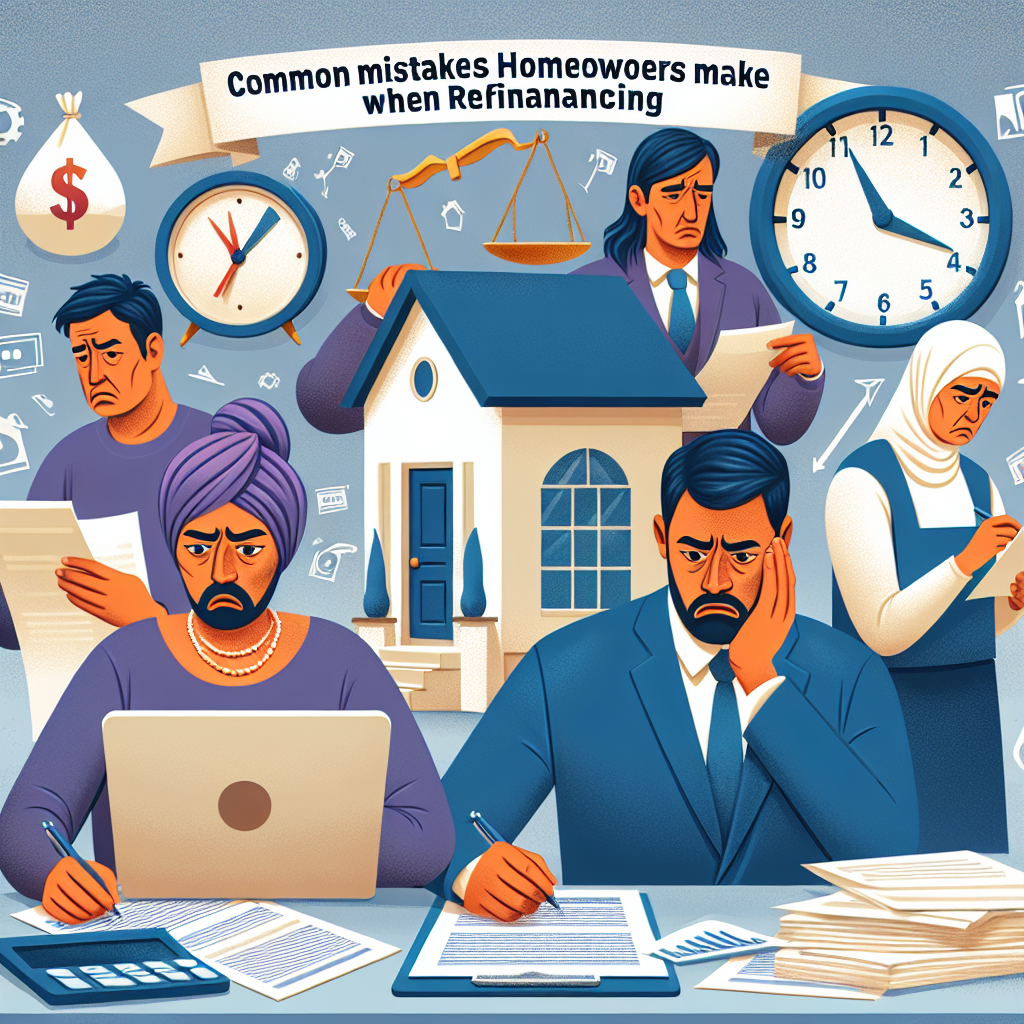Refinancing your home can be a smart financial move, but many homeowners fall into common traps that can lead to suboptimal outcomes. Whether you’re looking to lower your monthly payments, reduce your interest rate, or access your home’s equity, understanding the pitfalls of refinancing is crucial. In this article, we will explore the most frequent mistakes homeowners make when refinancing and how to avoid them.
1. Not Shopping Around for the Best Rates
One of the most significant mistakes homeowners make during the refinancing process is not exploring multiple lenders. Many homeowners simply settle for the offer from their current mortgage lender without comparing it to other options.
How to Avoid This Mistake
- Research Multiple Lenders: Use online tools and resources to equip yourself with information from various lenders.
- Get Quotes: Reach out to at least three to five lenders for quotes that include interest rates, closing costs, and loan terms.
2. Ignoring Overall Costs of Refinancing
Refinancing comes with its own set of costs, from closing costs to appraisal fees. Homeowners often overlook these expenses and mistakenly focus solely on the monthly payment reduction.
How to Avoid This Mistake
- Calculate the Breakeven Point: Determine how long it will take you to recoup the initial costs through your monthly savings. If you plan to move before reaching this point, refinancing may not be worth it.
- Consider Long-Term Implications: Assess not just the monthly savings but the total cost of the new loan over its lifetime.
3. Not Understanding Different Loan Types
Not all loans are created equal, and homeowners often make the mistake of not understanding the implications of different loan products. Fixed-rate, adjustable-rate, and interest-only loans all have unique features that may impact long-term financial stability.
How to Avoid This Mistake
- Educate Yourself: Invest time in understanding the various loan types and how they affect your overall financial picture.
- Consult a Financial Advisor: Speak with a financial advisor or mortgage expert who can guide you in choosing the right loan type for your situation.
4. Failing to Improve Credit Score Before Refinancing
Many homeowners enter the refinancing process without considering the impact of their credit score. A higher credit score can significantly lower your interest rate, but many ignore this critical factor and proceed without taking steps to improve their score.
How to Avoid This Mistake
- Check Your Credit Report: Obtain a copy of your credit report to identify areas for improvement.
- Take Steps to Improve Your Score: Pay down debts, make payments on time, and avoid taking on new debt before refinancing.
5. Not Considering the Loan Term
Homeowners often overlook the importance of loan term when refinancing. Extending your loan term may lower your monthly payment, but it can result in paying more interest over the life of the loan.
How to Avoid This Mistake
- Weigh Pros and Cons: Consider whether a shorter term may save you money in the long run despite higher monthly payments.
- Set Realistic Goals: Match your loan term with your financial goals—if you plan to stay in your home long-term, a shorter loan term may be beneficial.
6. Overlooking Prepayment Penalties
Some homeowners are unaware that their current mortgage may have prepayment penalties that could cost them when refinancing. These fees can negate the savings achieved through refinancing.
How to Avoid This Mistake
- Review Your Current Mortgage Agreement: Check for any clauses regarding prepayment penalties.
- Calculate Potential Costs: Include any prepayment penalties in your overall refinancing cost analysis.
7. Focusing Solely on Interest Rates
While a lower interest rate is a significant factor, it shouldn’t be the only consideration when refinancing. Homeowners often make the mistake of fixating on rates and neglect to evaluate other essential factors like loan terms, fees, and overall loan structure.
How to Avoid This Mistake
- Look at the Whole Picture: Consider all terms and conditions, not just the interest rate.
- Calculate Total Costs: Factor in fees, closing costs, and loan duration to get a complete understanding of your potential savings.
Conclusion
Refinancing your home can be a valuable tool in achieving financial freedom, but it requires careful consideration and understanding. Avoiding these common mistakes can help you secure the best terms and achieve your long-term financial goals. By researching, asking questions, and consulting with professionals, you can navigate the refinancing process more effectively and potentially save a significant amount of money in the long run.

